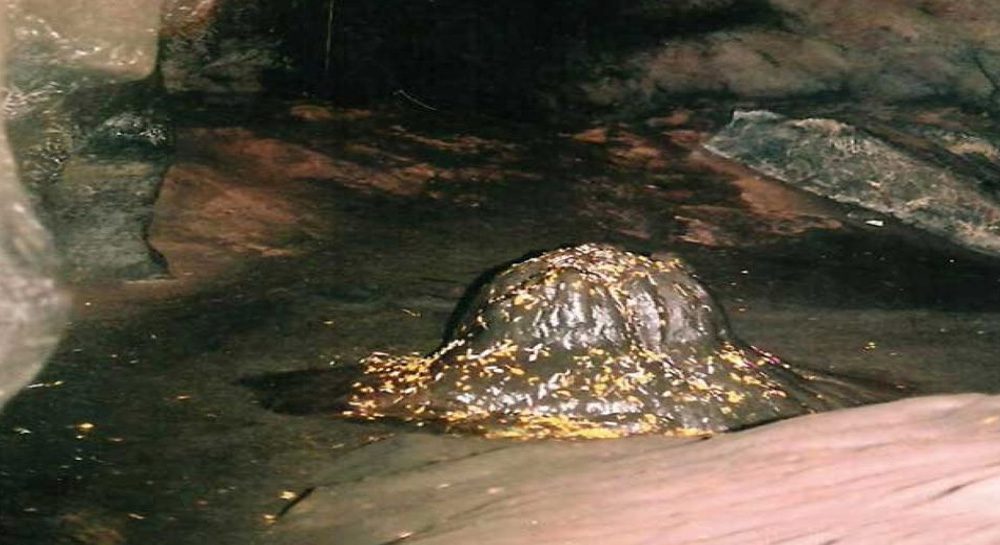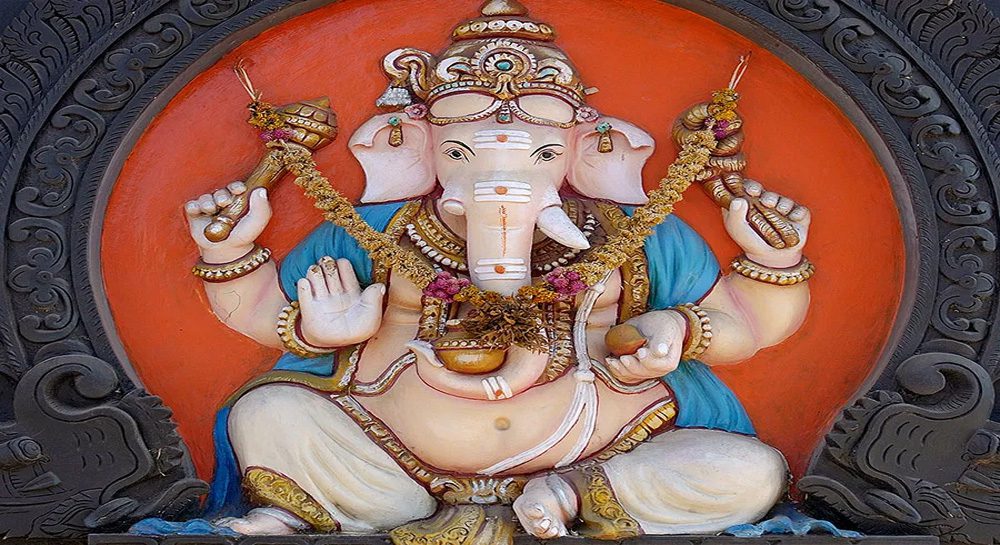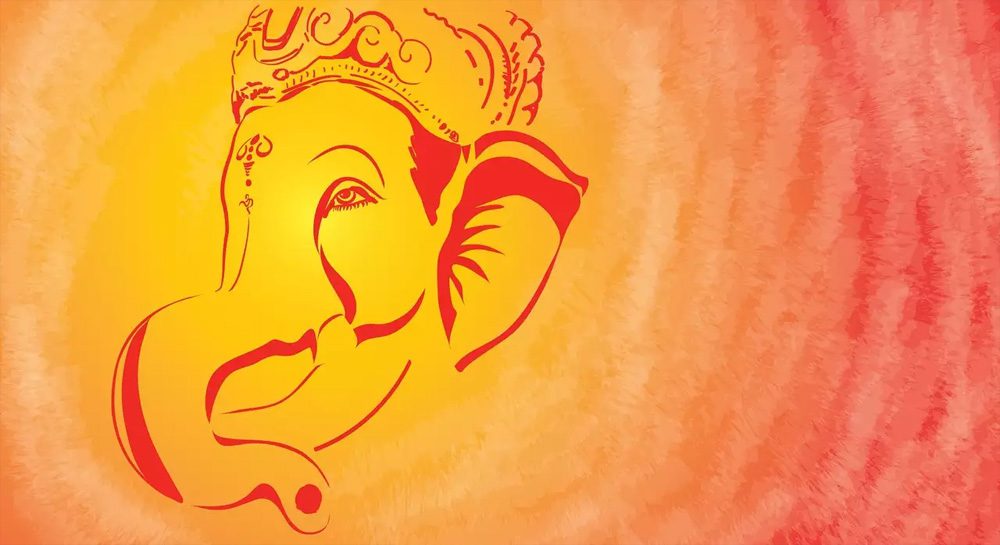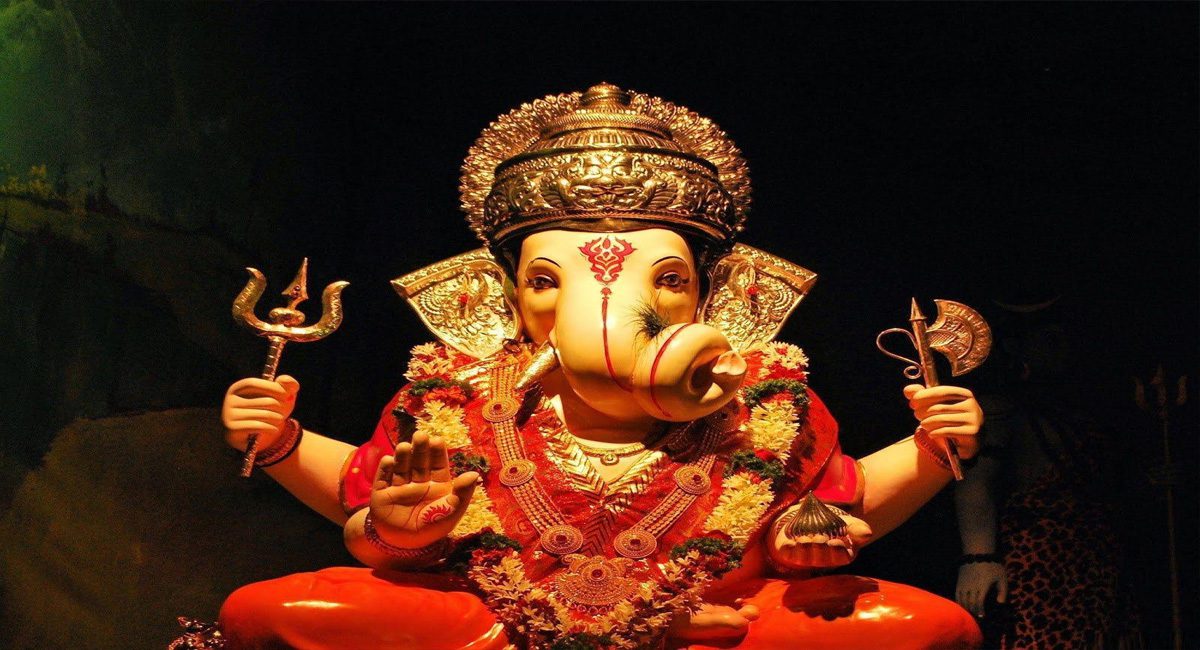Lord Ganesha, one of the most beloved deities in Hinduism, is known for his distinctive elephant head. The tales surrounding his unique countenance are steeped in rich mythological history. However, a question that has intrigued followers and scholars alike is: where is the real head of Lord Ganesha? This blog attempts to delve into this mystery with a curious and reverent approach.

The Patal Bhuvaneshwar Cave in Pithoragarh is a place of great significance, as it holds the revered beheaded head of Lord Ganesha. Situated in the beautiful Pithoragarh district of Uttarakhand, this cave is both sacred and historically significant. As you enter the cave, you will be amazed by its depth, which stretches about 90 feet deep. The cave itself is an impressive 160 meters long and is nestled within a massive hill. It’s a truly captivating site that offers a unique blend of spirituality and natural wonder.
The Mythological Story of Ganesha’s Head

A deep understanding of Lord Ganesha’s transformation necessitates an exploration of his mythological origin. Lord Ganesha is the son of Lord Shiva and Goddess Parvati. One day, when Parvati was bathing, she created Ganesha from the dirt of her body and assigned him the task of guarding the door.
When Shiva returned and attempted to enter, Ganesha, not recognizing him, prevented his entry. This enraged Shiva, leading to a fierce battle, and in the heat of the moment, Shiva severed Ganesha’s head.
Later, realizing his grave mistake, Shiva promised to replace Ganesha’s head with that of the first creature he came across facing north, which was an elephant. Thus, Lord Ganesha came to have the head of an elephant, symbolizing wisdom and learning.
The Spiritual Interpretation of Ganesha’s Elephant Head

Just as intriguing as the mythological story are the spiritual interpretations of Ganesha’s elephant head. Hindus believe that every aspect of Lord Ganesha, including his elephant head, has a profound spiritual significance.
The elephant head represents wisdom, understanding, and a discriminating intellect that one must possess to attain perfection in life. It also signifies the mastery of the Aum, the sound symbolizing the cosmic reality.
The Archaeological Perspective
Through the lens of archaeology, the head of Lord Ganesha opens up another perspective. Excavations across the Indian subcontinent have unearthed terracotta figures and artifacts depicting elephant-headed deities dating back to the Indus Valley Civilization.
These ancient figurines suggest that the worship of an elephant-headed deity was prevalent even before the traditional narratives of Ganesha took shape. Therefore, the ‘real head’ of Ganesha might be a metaphysical concept, signifying a deeper spiritual truth rather than a physical entity.
Lord Ganesha in Art and Iconography
Next, it’s important to touch on the significance of Lord Ganesha in art and iconography. His portrayal of an elephant head is a dominant theme in Indian and Southeast Asian art.
The artistic representations of Ganesha vary considerably, depicting him in various poses and contexts, yet the elephant head remains a consistent feature. This reaffirms the acceptance and reverence of Ganesha’s elephant head, transcending mere physicality.
The Philosophical Angle
From a philosophical perspective, Ganesha’s elephant head embodies deep metaphysical concepts. It represents Atman—the eternal, indestructible soul—and Maya—the transient physical reality.
As per Hindu philosophy, the ‘real head’ of Ganesha isn’t a tangible object but an embodiment of higher knowledge and eternal truth. It serves as a reminder to look beyond the physical realm and aspire for spiritual enlightenment.
The Symbolism of Ganesha’s Head in Modern Times
In modern times, the symbolism of Ganesha’s elephant head has permeated beyond religion, finding its place in popular culture, art, and even corporate logos.
The elephant head of Ganesha is seen as a symbol of strength, wisdom, and good luck, and it is believed to remove obstacles. It is these aspects, rather than the literal physical head, that has retained significance and relevance in contemporary times.
The Never-Ending Quest
As we reach the end of this exploration, it becomes evident that the quest for the real head of Lord Ganesha may not have a definitive answer. It lies at the intersection of mythology, spirituality, archaeology, art, philosophy, and popular culture
The ‘real head’ is not a physical entity, but a profound symbol encompassing wisdom, enlightenment, and the overcoming of obstacles. This pursuit of understanding the essence of Ganesha’s head can thus lead to profound spiritual growth and insight.
Mantras of Lord Ganesha
Lord Ganesha is revered widely in Hinduism and several mantras are dedicated to him. Here are a few of the most popular and powerful ones:
Ganesha Sharanam Mantra: This mantra is often chanted to seek Lord Ganesha’s protection and guidance. It is:
“Ganesha Sharanam, Sharanam Ganesha”
Translation: “I take refuge in Lord Ganesha.”
Ganesha Mool Mantra: This is considered the root mantra for Lord Ganesha, and it’s used during Ganesha puja or worship.
“Om Gan Ganapataye Namah”
Translation: “I bow to the lord who is the beloved son of Lord Shiva and who leads the troupe of obstacles.”
Siddhi Vinayak Mantra: This mantra is chanted for good luck and to remove obstacles.
“Om Hreeng Greeng Hreeng”
Ganesha Gayatri Mantra: This is a version of the universal Gayatri mantra, dedicated to Lord Ganesha.
“Om Ekadantaya Vidmahe, Vakratundaya Dheemahi, Tanno Danti Prachodayat”
Translation: “We pray to the one with the single-tusked elephant tooth who is omnipresent. We meditate upon and pray for the greater intellect of the Lord with the curved, elephant-shaped trunk. We invoke the Lord with the single tusk to bestow upon us endless blessings.”
Each of these mantras serves a unique purpose and can be chanted during prayers, meditation, or any time you seek the blessings and guidance of Lord Ganesha.
Frequently Asked Questions
What does Lord Ganesha’s elephant head symbolize?
Ganesha’s elephant head symbolizes wisdom, learning, and the mastery of the Aum, the sound symbolizing the cosmic reality in Hinduism.
Is there a physical ‘real head’ of Lord Ganesha?
The ‘real head’ of Ganesha isn’t a tangible object. It is a metaphysical concept embodying wisdom, enlightenment, and the ability to overcome obstacles.
How old is the worship of Lord Ganesha?
The worship of an elephant-headed deity dates back to the Indus Valley Civilization, as indicated by archaeological findings. However, the present form and narratives of Ganesha have evolved over the centuries.
Why is Ganesha’s head important in modern times?
In modern times, Ganesha’s elephant head is seen as a symbol of strength, wisdom, and good luck. It finds relevance in popular culture, art, and corporate logos, and continues to be a revered icon that is believed to remove obstacles.
What does the quest for the real head of Lord Ganesha signify?
The quest for the real head of Lord Ganesha is essentially a spiritual journey. It is about understanding the profound symbolism associated with his elephant head, which embodies wisdom, enlightenment, and the overcoming of life’s obstacles.

